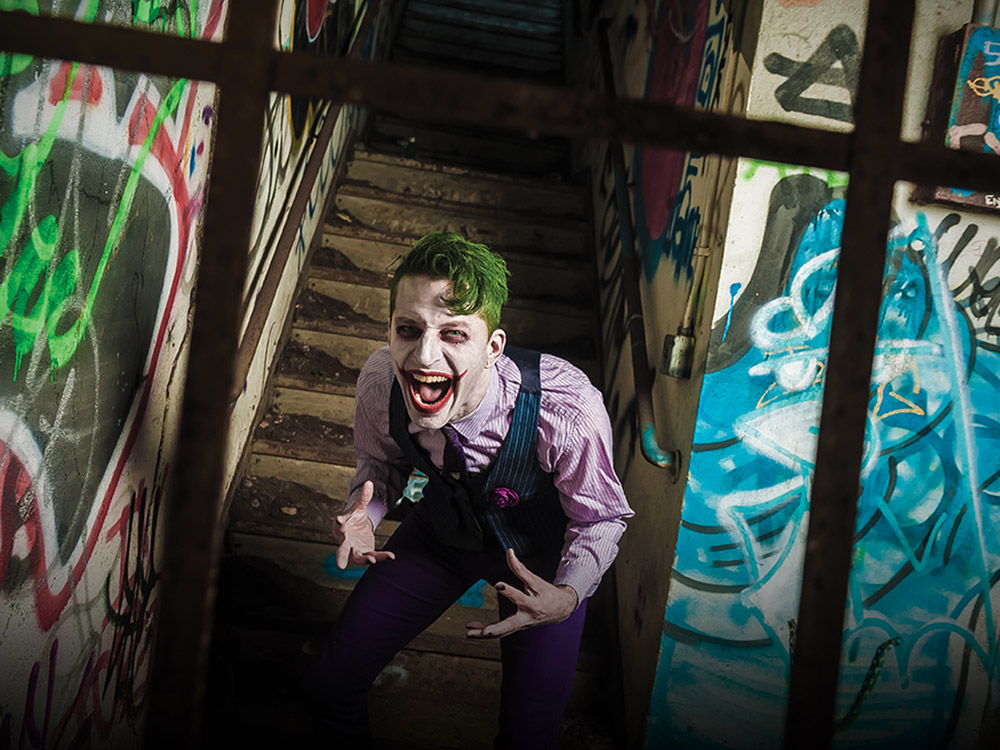Villains may be the bane of superheroes’ existence (get it?), but without these characters, there would be no heroes. Even the most evil mischief makers are integral to the plots of our favorite movies, TV series, video games, and books. And lately, the bad guys are getting good attention.
As Rocco Nevers — a screenwriter, filmmaker, and cosplayer — explains, “Superhero movies are only as good and strong as their villains. No one is going to root for the superhero unless the villain who they’re fighting is a formidable foe.” Their flair allows them to shine, so much so that they’ve garnered their own fandoms. Whether it’s villains’ personalities or iconic looks, fans are drawn to these characters in the same undeniable way Harley Quinn is attracted to the Joker.
With the recent onslaught of movies focused on characters who love to be bad, it’s clear that villains can be just as attractive to viewers as their good, heroic counterparts.
The proof is in the numbers, according to Box Office Mojo. Maleficent — the story of the evil fairy from the Sleeping Beauty tale — earned $758.4 million worldwide during its run in theaters in 2014. And when Suicide Squad — featuring the band of DC villains — burst into theaters in 2016, it earned $746.8 million worldwide; while Venom, a film focused on the symbiotic super villain from the Spider-Man comics, earned more than $855 million worldwide last year. These numbers prove that viewers love to delve into the dark side.
Although villain-centric movies perform well at the box office, critics’ reviews aren’t always stellar. But the problem with the films may not be the plotlines. According to David Negrin, an assistant professor of film, television, and emerging media at Ithaca College and the executive director of the NYC Screenwriters Collective, critics and viewers may have difficulty admitting their love for an evil person and their wicked ways because the public views these actions as shameful and immoral.
“Powerful or vicious villains allow us a kind of cynical escapism that can feel cathartic,” Negrin says. “Some people may be publicly ashamed to enjoy a story where the bad guys win. But they’ll pay money to watch it. [For example], the entire horror genre is based on an audience enjoying a dark world with jump scares, monsters, and murderers everywhere.”
Whether or not the reviews are positive, one thing is for sure: Villains bring in the big bucks — and that’s true for comic book sales, too. In April, several villain- and former-villain-centric series made it into the list of top 50 comic books sold in North America, according to John Jackson Miller, curator at Comichron. Batman Who Laughs, which is a villainous version of Batman, took third place, and Thanos No. 1 took seventh place. The Web of Venom: Cult of Carnage followed in ninth place, while Venom No. 13 took 18th place, and Star Wars: Vader Dark Visions No. 3 ranked 43rd.
Miller believes these comics achieved high sales because fans want to explore the characters’ lives and motivations. “[As] villains have grown more three dimensional, people want to know what makes them tick. And, of course, they’re able to act in ways that more heroic characters are unwilling to, which makes them seem edgier.”
Sympathy and Empathy Play Starring Roles
But how can someone so evil be so appealing? Villains are — as Shrek says — like onions: They have layers. Their origin stories, especially the way they’re written in recent years, are complicated, and the reasons they choose to sway toward the dark side can make their malicious and wily crimes understandable. This leads fans to sympathize with them on a deeper level.
Nevers, whose go-to villain cosplay is DC’s Deadshot, explains that villains sometimes have more depth than heroes, with storylines that dive into a dark past that draws them to commit horrendous acts. This is why Heath Ledger’s the Joker from the 2008 The Dark Knight trilogy is considered to be one of the best villains in movie history.
“We understood how he operated. I think there’s a line in that movie where Batman asks Alfred [about] the agent of chaos theory. Alfred says that some people just like to watch the world burn, and that kind of unhinged characteristic in a villain makes for unpredictability,” Nevers says.
Sympathy connects us to villains with heartbreaking backstories, such as Maleficent in the live-action Disney film, who turned to the dark side after King Stefan — Aurora’s father — made his ambition a priority over their love. In order to become king, he drugs Maleficent, guardian of the Moors, and cuts off her wings to present to the dying king, takes over the throne, and marries Princess Leila. In response, Maleficent turns the Moors into a dark realm, and then the story of Sleepy Beauty begins. Who wouldn’t want revenge after a brutal betrayal/breakup like that?
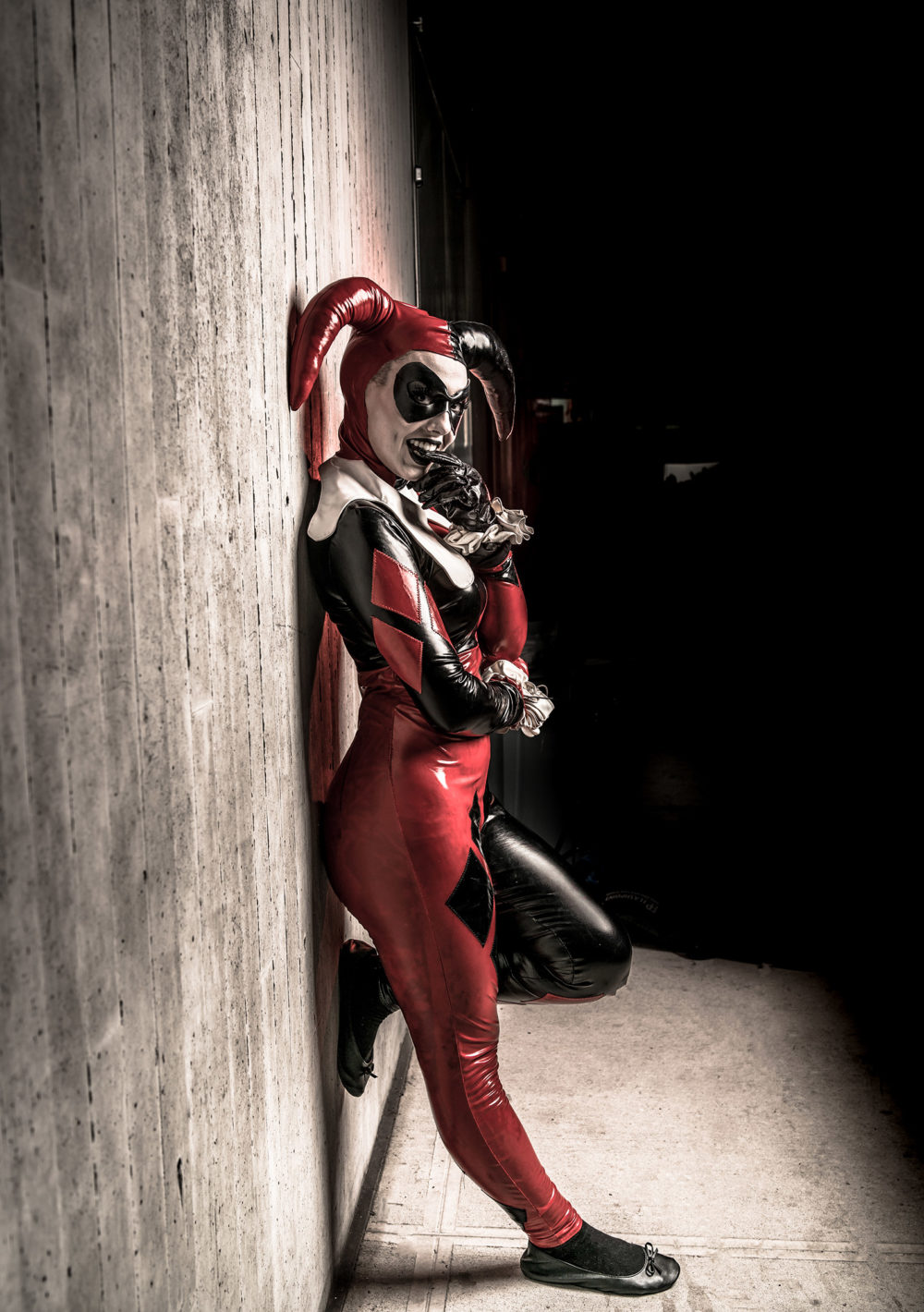
Nevers brings up the more recent example of Erik Killmonger from Marvel’s Black Panther, which premiered last year. Ulysses Klaue and his cronies attacked Wakanda and forced Killmonger’s father, Prince N’Jobu, to join them. When Wakanda defeated Klaue, King T’Chaka killed N’Jobu and exiled his family as punishment for his betrayal. When he becomes an adult, Killmonger takes revenge against T’Chaka and his family; dethrones the king’s son and successor, T’Challa/Black Panther; and rules Wakanda with an iron fist.
“Even though he’s the villain with evil intentions, [his storyline] was emotionally riveting because you can understand how someone can be driven to commit these acts, to take this stand, and to take this side. It makes more of an emotional, moral dilemma for the hero in the end,” Nevers explains.
And because of their many flaws, sometimes the villains are easier to relate to than the heroes. Fans, who as humans can make mistakes and have the potential to turn dark, are drawn
to villains, who are now complex characters. Viewers can watch these origin stories turn ordinary people into sinister beings. T. Makana Chock, the David J. Levidow Professor at the S.I. Newhouse School of Public Communications at Syracuse University, explains, “As fallible humans, we identify with their struggle. We may see, or project, some of our own decisions or struggle into a villain’s path to the dark side. Villains may provide audiences with a vicarious outlet for their own revenge fantasies. The villains’ actions can provide audiences with a cathartic outlet for resentment or anger at those who have bullied or abused them.”
Villainous Cosplay
While superheroes have major roles in the cosplay scene, villains are arguably just as popular. Photo shoots, conventions, and other cosplay community events are never complete without a raft of colorful villains. The same connection between superheroes and villains seen in movies applies to cosplay: You can’t have one without the other.
Fans can interpret the backstory and historical depictions of each villain in creative ways through costume building and acting. Whether they nailed the original look or “traced” and built on the original — the way Nevers does — posing with the opposing hero remains a priority to bring the character to life.
According to Colin Dungan — a New York-based artist and Joker cosplayer — it’s also fun to play out dastardly characters in an acceptable setting. Being bad isn’t typically socially acceptable, but cosplayers can go to a venue, portray a villain, and feel confident doing so. “There’s a big aspect of cosplay of having the opportunity to be somebody else, be more of yourself when you think those parts are not socially acceptable, or you don’t know how to express yourself. It gives a route for people to expand that with this type of expression,” he says.
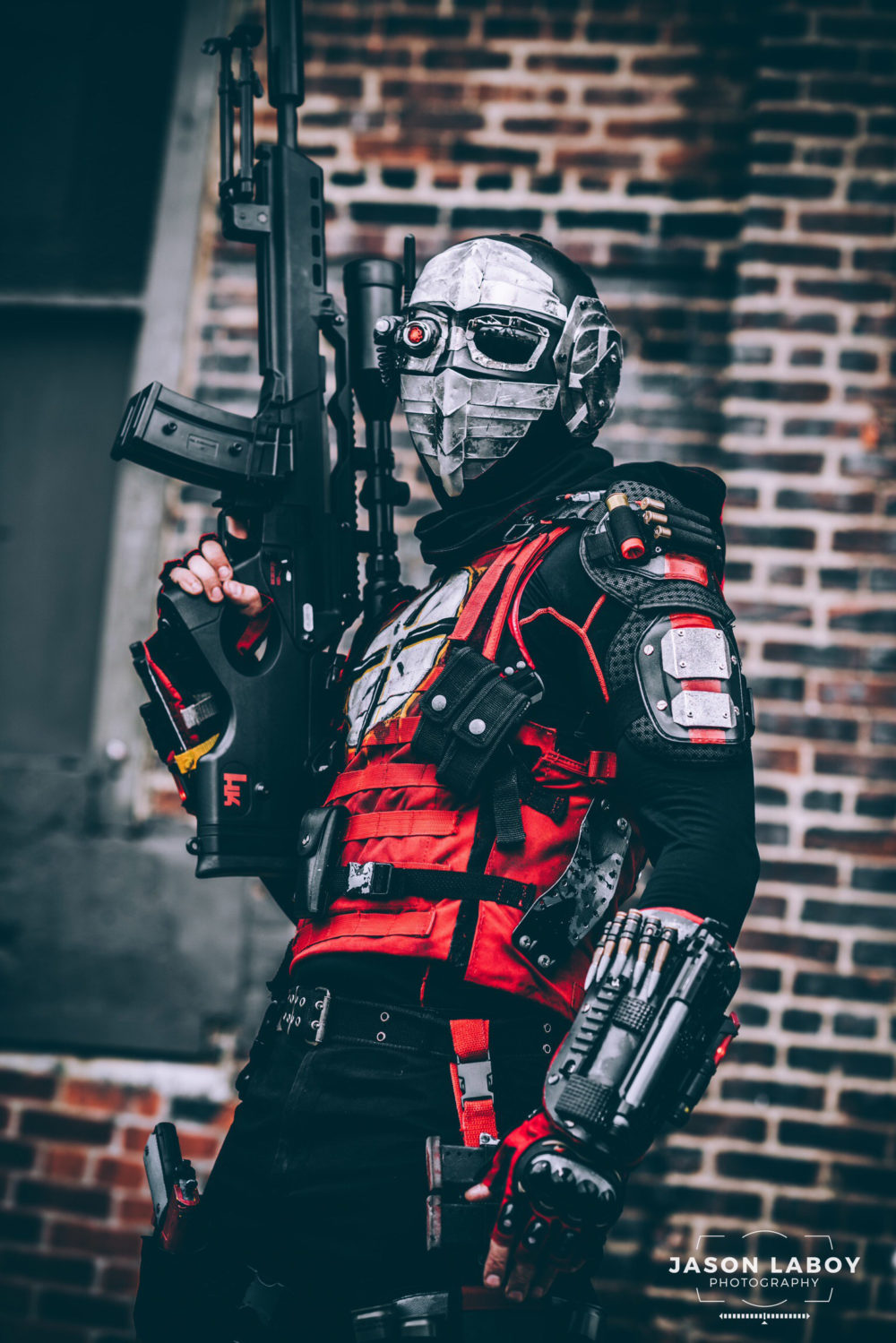
This love for villainy and self-expression translates into increased sales for character costumes. According to Rich Tinari, sales manager at Rubie’s Costume Co., the company’s villain costumes see a major bump in sales when the character’s look and persona stand out. While the company’s superhero costumes are its bestsellers, villain outfits still perform well if the movie was a box-office hit and the character has a stand-out clothing design and colorful personality. However, if the villain from the movie is downright malicious, the costume won’t be as popular.
Rubie’s’ top sellers for villain costumes are Thanos and his Infinity Stone Gauntlet, the classic Darth Vader, the Joker, and Harley Quinn with all of her accessories. Tinari says these costumes perform the best because fans love the characters. “Villains can be very colorful characters with big personalities,” he explains. “They are charismatic and smart. [They] go outside the boundaries of acceptable society, and that appeals to those who would want to break from the mold.”
As long as there are superhero movies and series around, there will always be a villain within them to match the hero’s strengths. In the same way, there will always be mega-fans of their stories who want to share that appreciation with others. While villains may be defeated in the stories, they will live on through fans’ creative expression — and especially through cosplay.
Bringing Home the Villain Experience
Products and merch are a major aspect of being a mega-fan. Fans want to experience what they see on-screen in their own lives. The toy industry has always jumped at the chance to build fan pride and create the perfect merchandise for collectors’ shelves. With the success of the villain genre in movies, TV, and comic books, there’s no surprise that the toy industry reaps the benefits of that success.
The release of Avengers: Infinity War last year regenerated a love for one of the most epic Marvel villains of all time, Thanos, who first appeared in Marvel comics in 1973. Hasbro “jumped at the opportunity to bring Thanos’ Infinity Gauntlet to life in 2018 with a full-size, premium, role-play Marvel Legends version,” says Ryan Ting, senior manager of global brand development and marketing for Hasbro.
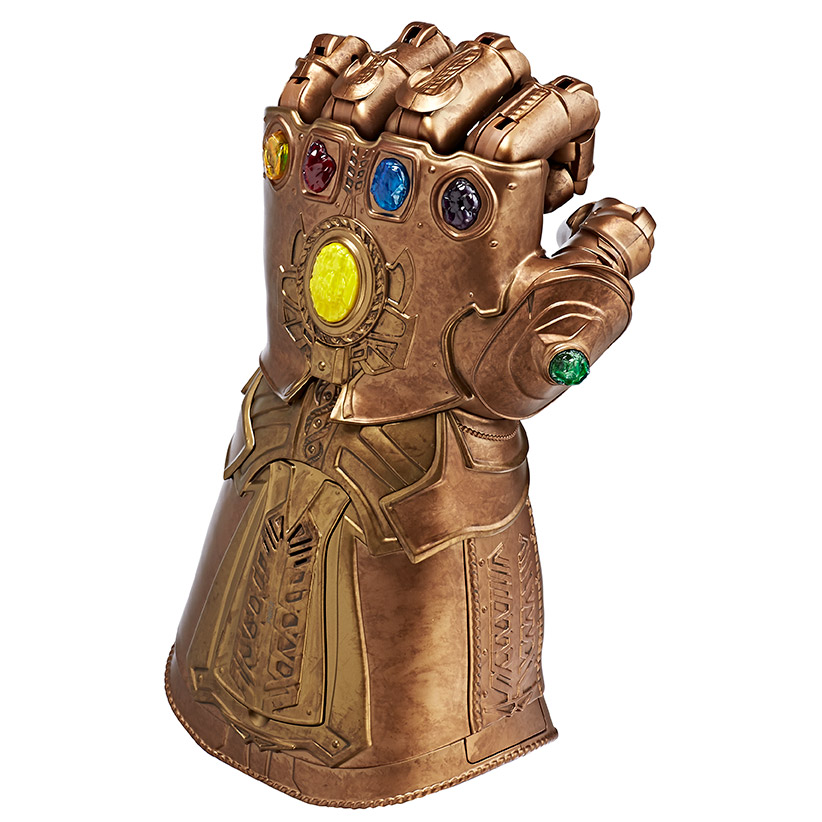
Ting believes that the idea of wielding the power of the Infinity Stones drove the Infinity Gauntlet’s success last year. Hasbro created
he toy for both displaying and playing, which created a wide appeal for collectors and young fans. “In addition to premium sculpting and paint deco, the five individually articulated fingers, six light-up Infinity Stones, and authentic movie sound effects give fans the sense of total control. There is also a lock mode for displaying the gauntlet either open-handed or in a closed fist, so it will look impressive anywhere!”
German game and toy company Ravensburger used a similar concept in its award-winning Disney Villainous board game. The strong fan base for Disney’s characters — including the passionate fans at Ravensburger — inspired the company to design a game in which players try to hatch the most villainous scheme and foil their opponents’ plans by playing Hero cards. Players step into the mind of villain and try to relate to their circumstances during gameplay.
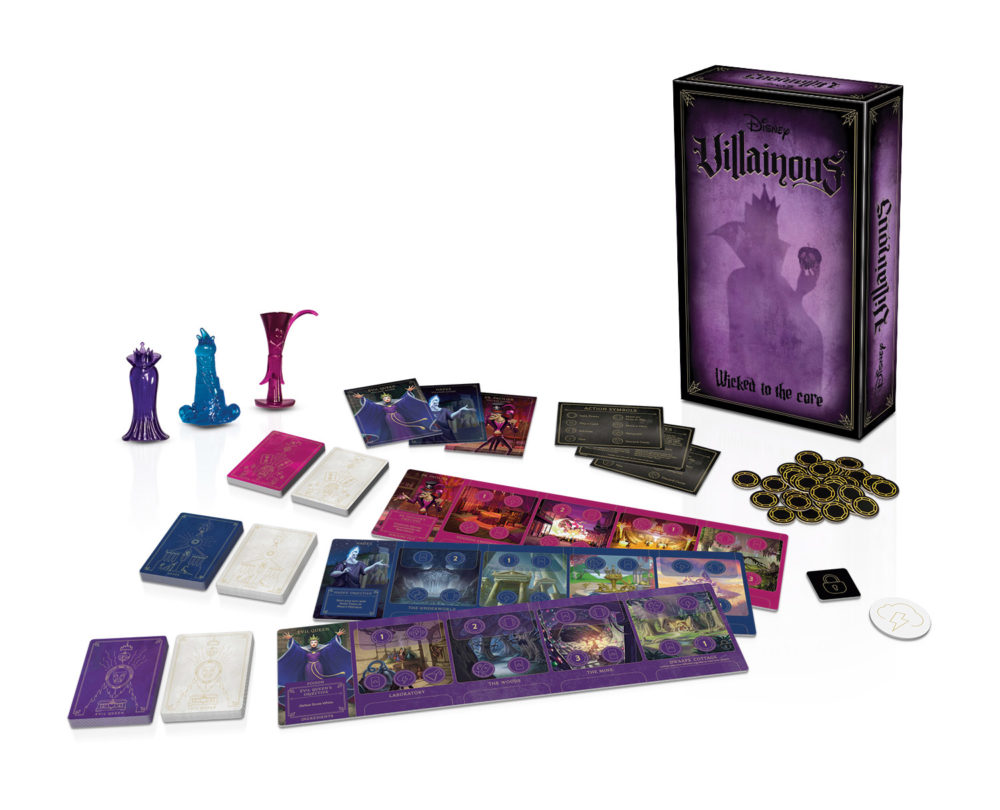
“By creating a game where the bad guys are the main characters, we have turned the tables from what is expected. We wanted to disrupt and offer something unexpected, yet super authentic,” says Filip Francke, CEO of Ravensburger America.This passion helped Ravensburger sell more than 350,000 copies of Disney Villainous in less than a year. The game also won the coveted Toy of the Year award in the games category at Toy Fair New York this year. Francke saw this as a major surprise. “Ravensburger has been nominated five times before, but we had never won — and Villainous is not the typical type of game that wins this prize. From what we know, this might have been the first time a licensed game walked home with the title,” he says.
Villains are necessary for driving the plots of fan-favorite TV shows, comic books, and movies. Fans will continue to take pride in their love for these pivotal characters, and companies will show love in their own ways by putting out must-have products based on the bad guys.
This article was originally published in the Pop Insider’s Summer 2019 Issue No. 4, click here to read more!

